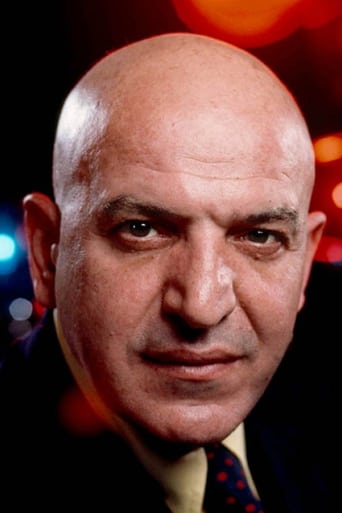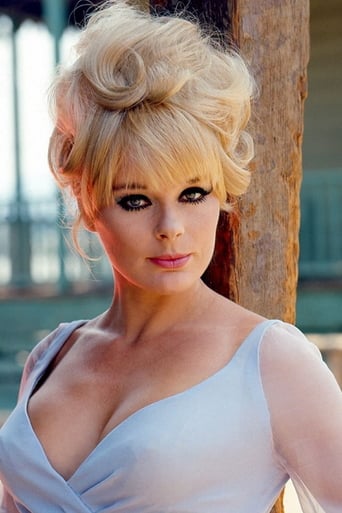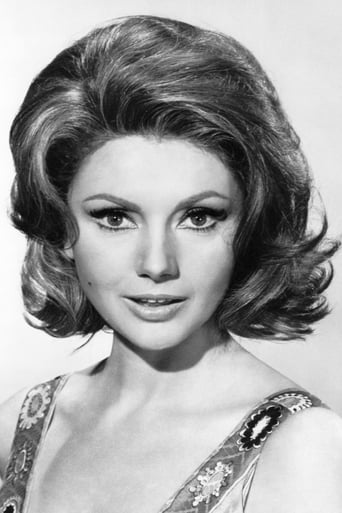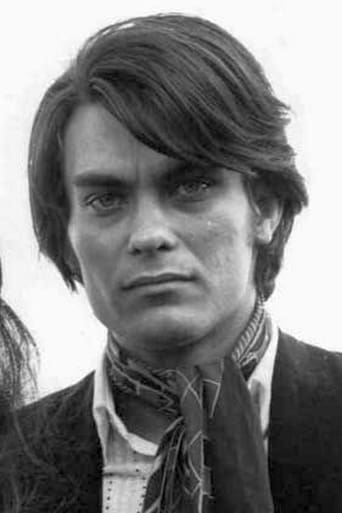moonspinner55
Intriguing prologue--with tourist Elke Sommer lost on the deserted streets of Spain after locking eyes with a dead ringer for the Devil himself--is then canceled out by reincarnation/house of horrors plot that goes around in circles (many defenders of the movie say that is precisely the point). Director and co-screenwriter Mario Bava, who may have been inspired by the 1962 American film "Carnival of Souls", can't come up with any coherent shocks, so instead turns the atmosphere into a surreal dream-state (the picture is madness personified--only it's the viewer who is driven batty). Telly Savalas is the lollipop-sucking, chain-smoking butler of the manor where Sommer and three others take refuge for the night; inside the brightly-lit rooms, Sommer is hounded by the murdered lover from her previous life. Coy nudity, cartoon-red blood and a ridiculous "romantic" flashback pad out the excruciating 95-minute running time, while someone in the estate is sneaking around with a mallet, conking people on the head. Bava should have been their next target. U.S. audiences were initially shown a different version in 1975, "The House of Exorcism", with newly-shot scenes. *1/2 from ****
MARIO GAUCI
This was my third time watching this most personal of Bava's works: whether it is due to the fact that the last two occasions proved problematic (the original Image Entertainment DVD experienced an audio glitch during playback that nearly blasted my TV speakers, while there were constant audio-related issues on the Italian-language track of the copy I acquired of the movie's Raro Video edition!) or the shadow that always loomed large over it in the shape of the execrable re-edit THE HOUSE OF EXORCISM (1975), I have never been really taken with the film as many others seem to be!! Truth be told, watching the featurette "EXORCISING LISA" soon after, I was sort of glad to realize that I was not quite alone in this – as both assistant director and the director's own son Lamberto Bava (who always felt the end result, even in its true incarnation, was impenetrable and somewhat unresolved!) and Bava scholar Alberto Pezzotta (suggesting that the time of Gothic Horror had passed and that, other than merely ethereal, it was elegiac and self-referential!) disclaim its masterpiece status!! Incidentally, though the script is attributed to the elder Bava and producer Alfred Leone on foreign prints (as a matter of fact, throughout my ongoing Bava centenary tribute, it has been a constant irritation to find English credits on Italian-language editions of his pictures!), it was actually penned by other hands – including Roberto Natale, who also puts in an appearance in the 25-minute doc!! Incidentally, while ostensibly an original, elements from it could be traced to several short stories dutifully namechecked during said featurette as well as Tim Lucas' audio commentary… Mind you, the movie is undeniably intriguing (in my review of the director's KILL, BABY…KILL! {1966}, also co-written by Natale and a film whose stature seems to grow with each viewing, I mention how LISA owes a debt to it in the desolate narrow streets/decaying villa settings and the general nightmarish vibe) and, yet, it comes off as strangely aloof: one does not really connect with any of the characters throughout…especially, as with A BAY OF BLOOD (1971), these largely seem to be on hand merely to ratchet up the 'body count' department (did we really need an additional love triangle to the mind-boggling quintet – taking into consideration that Elke Sommer here undertakes a dual role – already involved?!). The score by Carlo Savina (with generous but effective sprinklings of Joaquin Rodrigo's famous "Concierto De Aranjuez") is a major asset, as is the bemused presence of Telly Savalas (obviously assuming the latter half of the titular parts, scheming and manipulating the various figures around – in both their human form and lookalike mannequins – as if they were pieces on an invisible chess board…while under the guise of an overworked and, seminally, lollipop-sucking butler!). The rest of the cast, however, are only so-so: Alessio Orano is, fatally, unsympathetic as an impotent necrophile(!); Alida Valli, on the other hand, is imposing as ever playing his aristocratic and over-protective blind mother; and Espartaco Santoni is decidedly baffling as the latter's husband and the former's rival for love of his own spouse Sommer (his comings and goings, sometimes literally from death to life, eventually grew irritating!); while Sylva Koscina, Eduardo Fajardo and Gabriele Tinti, as already intimated, are at once underused and downright redundant! Typical of Bava, too, the movie's look cannot be faulted (despite having a Spanish d.p., with a penchant for shooting in soft-focus, forced on him), effortlessly moving between the modern-day 'bookends' and the period milieu of its central narrative.By the way, given that I am going through the director's filmography in a non-linear fashion, it becomes interesting to note parallels between efforts that one would probably overlook if they were to be viewed chronologically; recently, for instance, I picked up on how SHOCK (1977) is pretty much a reworking of THE WHIP AND THE BODY (1963) and even HATCHET FOR THE HONEYMOON (1970) in its depiction of a deranged protagonist coming to terms with a crime that had been all but blocked out of its consciousness. Having just re-acquainted myself with the latter prior to my screening LISA, which I took as Bava's most Buñuelian work (in view of its leading man's affinity with the latter's Archibaldo De La Cruz), here we have an ending – the Devil adopting modern means of transportation – which recalls the Surrealist maestro's slyly abrupt way of concluding his SIMON OF THE DESERT (1965)! Since both Bava films were actually shot in Spain, could it be that the cultured yet self-effacing Italian was drawn to checking out the oeuvre of the country's most celebrated celluloid son at some point during their making? That said, Lucas claims the device – along with the film's inherent oneiric tone – was actually a direct allusion to Roger Vadim's "Carmilla" adaptation: different strokes for different folks, I guess! The audio commentary did sometimes go overboard in trying to match the poetic quality of the picture: the last rose of the season plucked by Orano for Sommer at one point apparently stood for Bava's own last gasp at making an international name for himself – if you say so, Tim…but, then, I was grateful to learn that Bava appreciated the work of Georges Franju and, indeed, it had never occurred to me before that he recruited two ladies from his films, i.e. Valli (from EYES WITHOUT A FACE {1960} – her mannered death scene being even incorporated in the finale here) and Koscina (from JUDEX {1963}), for LISA! In the end, while not quite among the director's greatest, the film under review is still vastly preferable to its bastardization THE HOUSE OF EXORCISM…which, regrettably, will follow presently in my (41-strong but by-now inevitably winding down) Bava marathon.
Uriah43
While touring a medieval European village, Lisa Reiner (Elke Sommer) gets separated from her tour group and ends up needing transportation out of town. As luck would have it, a car breaks down nearby which has a chauffeur named "George" (Gabriele Tinti) and two occupants, "Francis Lehar" (Eduardo Farjardo) and his wife "Sophia Lehar" (Sylva Koscina) who offer to give her a lift. Unfortunately, the car breaks down again and all four are compelled to accept accommodation in a large house out in the countryside. It doesn't take long for them to realize that the residents are very strange. Especially the butler, "Leandro" (Telly Savalas). At any rate, rather than spoiling the movie for those who haven't seen it, I will just say that this is a rather macabre film which I found to be both slow and confusing. And while I enjoyed the performances of Elke Sommer, Sylva Koscina, and Telly Savalas, the disjointed plot noticeably hampered what could have been an outstanding movie. As a result, I give it an average rating.







